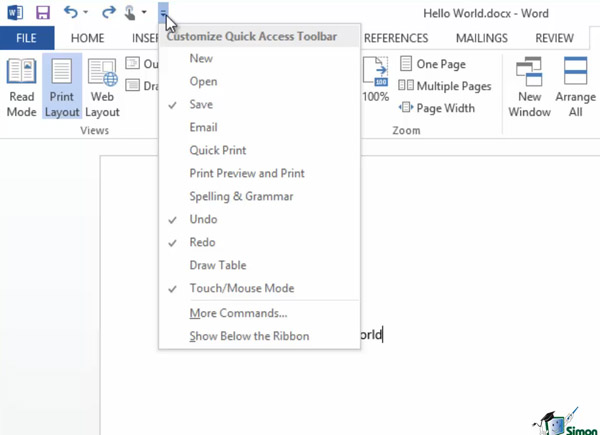



They will still appear on the toolbar, however. NOTE: If you choose to modify the toolbar in only the current document, the options available in all documents will disappear from the list of current toolbar commands. Even once customized, the Quick Access toolbar may contain different options in each program.įrom the Customize Quick Access Toolbar pull-down list, select whether you would like these changes to appear in all documents or only the current document.

NOTE: Different options appear in each Office program. The ( Program) Options dialog box appears, displaying the Customize options. In other programs, names of options and dialog boxes may change slightly.įrom the Quick Access toolbar, click Customize Quick Access Toolbar. NOTE: These instructions use the example of adding buttons to the Word Quick Access toolbar. Office also gives you the option of customizing the Quick Access toolbar for all documents, or simply the one you are currently working with. If there are options that you use frequently with different types of tasks, you may want to consider putting them on your Quick Access toolbar. It is always visible, no matter which tabs are active on the Ribbon. The Quick Access toolbar is available in Word, Excel, Access, and Powerpoint. Custom toolbars lead to less time spent searching through tabs and groups and more time spent on actual tasks. Within Publisher and Outlook, you may create a customized toolbar containing your own most-used buttons. This option is available in Word, Excel, Access, and PowerPoint. The Quick Access toolbar is always visible on the screen and can be resized to fit as many options as you need. To help you work more efficiently, Office allows you to customize the Quick Access toolbar or to create entirely new toolbars in certain programs. This article is based on legacy software. (Archives) Microsoft Office 2007: Customizing Toolbars


 0 kommentar(er)
0 kommentar(er)
